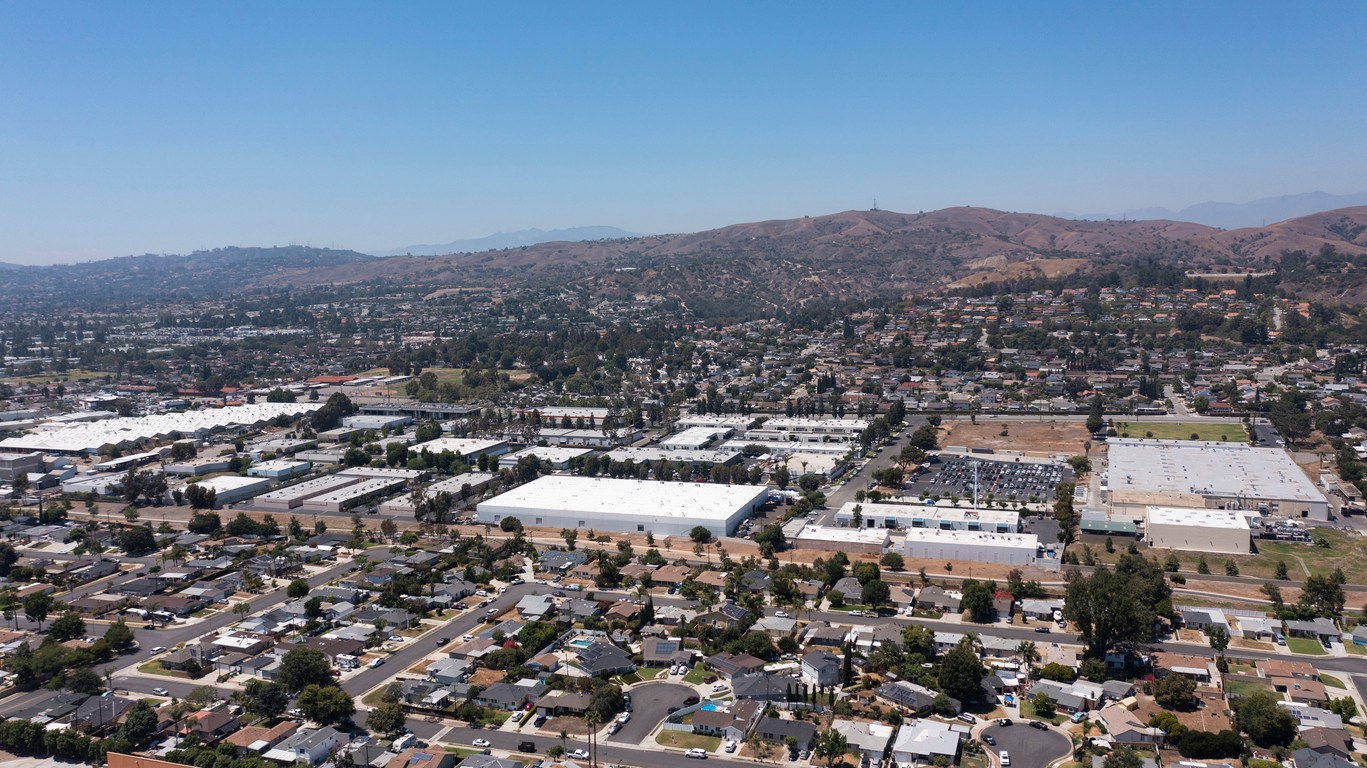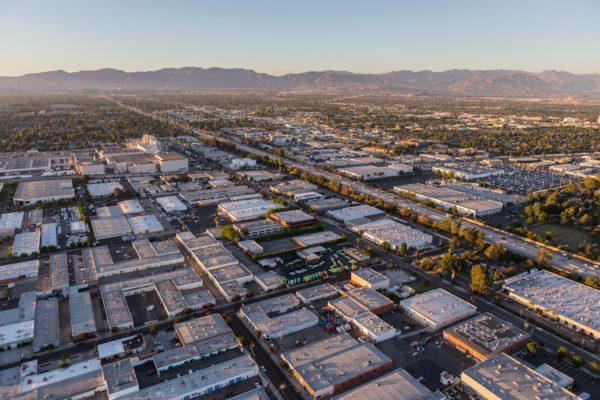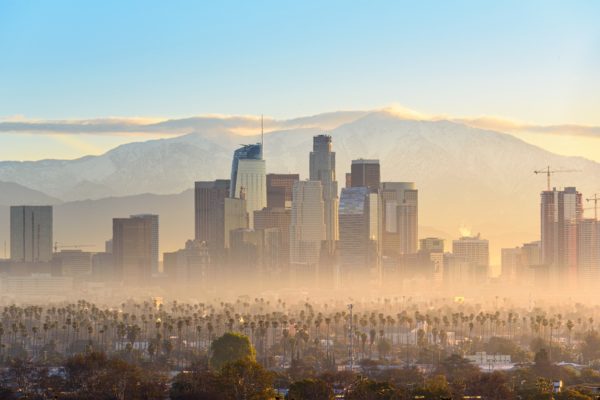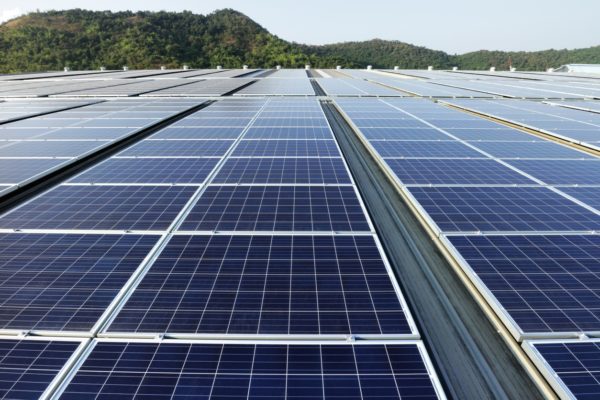
Operations like warehouses produce a lot of pollution. It is mainly because of the fuels like gasoline used for operating conveyor belt machines and other machinery that workers use to load and unload cargo. This, combined with a large number of vehicles and tractor-trailers and the fumes they produce, results in a working unit and storage facility that significantly contributes to greenhouse gases like carbon dioxide and nitrogen.
These gases harm the ozone layer of the planet and build in the atmosphere, making them inadequate for the ecosystem. The earth is surrounded by this layer, which prevents the sun’s dangerous UV radiation from penetrating the surface. A hole in the ozone layer allows for global warming, which then causes glaciers to melt, causing flooding and other environmental disasters.
The South Coast AQMD launched the WAIRE program to reduce emissions and improve air quality in Los Angeles and other California cities along the southern coast. It imposes a point system based on a menu to penalize warehouse owners and managers that carry out environmentally unsafe practices. A WAIRE program tries explicitly to control the usage of industrial machinery that is more environmentally friendly than its diesel and gasoline-powered rivals.
One of several ways that warehouses and owners can execute the WAIRE program is by requiring warehouse owners to abide by a point system and the WAIRE ruling. Are you interested in learning more about the WAIRE program? Continue reading if you want more information about this subject.
Areas Under the WAIRE Program

Many policymakers view Rule 2305, also known as the Warehouse Actions and Investments to Reduce Emissions (WAIRE) initiative, as a ruling. Los Angeles County, Orange County, and Riverside County are the counties that are governed by this decision. Due to this decision, warehouse owners can advance toward creating warehouse procedures that do not harm or destroy the environment.
With the aid of this program, California warehouse operators and owners may follow environmentally friendly guidelines and regulations, which motivates nearby and regional storage facilities to adopt more eco-friendly practices. The South Coast Air Quality Management District’s quality guidelines establish limitations on the permitted emissions.
Many plant owners and operators have adopted procedures and measures that do not adversely affect the air quality due to the South AQMD’s introduction of the WAIRE Program in May 2021. Nitrogen toxicity, particularly in the context of air pollution, can pose a severe risk to human intake. In the following sections, learn more about the adverse effects of elevated nitrogen levels in the environment and the importance of warehouse owners and operators considering their carbon footprints.
Why Regions Of California?
According to a study, Southern California has among the lowest air purity profiles in the country. It can result from frequent gas and fuel leaks when transporting merchandise between states. The gasoline storage tanks occasionally leak, which worsens the situation and can result in terrible circumstances.
Harmful substances, including carbon, nitric oxides, and methane emissions, are produced annually in Southern California cities and contribute to climate catastrophe. Although these substances are invisible to the naked eye, the destruction they cause is gradually beginning to affect human existence. The vehicle and even a bus that is stuck in static emit dangerous fumes into the warehouses.
Changing Dynamics of the Region
Due to the boom in e-commerce in California during the epidemic, shipping firms have witnessed a significant boost. The environment is suffering due to these enormous profits and growths. New laws and legislature are set up to support initiatives like the WAIRE program to address environmental issues due to energy production. If owners and operators don’t demand better and safer operations, local communities and citizens will suffer as the number of warehouses increases.
These may include eco-friendly machinery and electric trucks that don’t rely on burning fossil fuels. The pandemic has amply demonstrated the dangers of improper storage regulations and safety precautions. Large corporations can take advantage of underprivileged areas with no choice but to be close to industrial sites.
The regional warehouse sites have failed to satisfy the minimal federal air requirements for 30 years without adequate regulation. The launch of the WAIRE Program has given the neighboring villages cause for optimism. It enables warehouse operators and owners to look for technology that clears them from techniques and routines that produce pollution.
Authorities must put this order into effect so that warehouse owners may make the change without difficulty. The South Coast Air Quality has significant jurisdiction and duty in the regulation’s requirement to transition to greener technologies, including solar power and electric trucks. Visit their website to learn more.
Drastic Impact of Nitrogen Pollution in the California Region

Particulate matter, one of the main components of air pollution and smog, is formed due to nitrogen pollution. The quantity of airborne particulate matter is far higher than the World Health Organization’s recommended concentration level.
The adverse effects of outdoor air pollution on human health are pretty expensive. Algae and plants develop abnormally in water bodies where nitrogen contamination has been present. Due to these excessive growths, water bodies encounter dead zones or regions that do not sustain aquatic life. Fish and other marine life cannot thrive here.
Around 880 marine dead zones have been recorded worldwide, and this number is only increasing. The only way to address these issues broadly is through initiatives like the WAIRE ruling and other institutional-level actions. High nitrogen emissions can also contribute to soil pollution since they can severely raise the soil acidity and harm its microbiological components.
These microbial populations provide the soil with the ability to support life. It is well-recognized that a rise in atmospheric nitrogen may be detrimental to biodiversity in both terrestrial and aquatic habitats. This is a consequence of nitrogen-using plants’ propensity to overrun and dominate other plant species. Nitric oxide is a harmful greenhouse gas playing a dormant role in global warming.
The ozone layer, which shields life on earth from dangerous UV radiation from the sun, is also harmed by this gas. The logistics industry can minimize nitrogen pollution thanks to laws and regulations like the WAIRE program, which helps people breathe easier and sustainably improve the environment.
WAIRE Provides Alternative Energy Options

Sustainable energy is a source that never runs out or is limitless, like the sun. It also encompasses renewable and alternative energy sources such as commercial solar energy.
In the past few decades, we’ve started relying more on solar and wind energy for residential and commercial energy sources. Bit by bit, we’re becoming less dependent on more polluted sources like coal that are hazardous to our health and environment.
Solar Energy
Sunlight is one of the most abundant and accessible energy sources on our planet. Solar energy production in an hour exceeds the planet’s annual energy needs. Commercial solar energy offers many benefits – it’s reliable, cost effective, requires little maintenance and can save businesses money in the long run. It’s one of the fastest growing renewable energy sources today.
Hydroelectric Power Equipment
Rotating water turbines produce electricity in generators to support local power needs. The turbine blades move in water to make energy—often in fast-moving water in a wide river or swift water power from a high point.
Because they only change a tiny fraction of the flow, well-maintained small hydroelectric plants with capacity additions under 40 megawatts usually cause little environmental damage. But generating energy without a power grid using hydroelectric power is a costly option.
Wind Energy
Switching back to wind generators doesn’t make sense in light of the newest technology and innovation. With the power of the strong wind, the broad turbine blades spin and charge electric generators. The generators can be used subsequently to generate power. However, many storage facilities still employ this technology to produce alternative energy.
Coldwell Solar Offers Solar Energy Solutions
Solar energy solutions from Coldwell Solar enable warehouses to satisfy WAIRE implementation guidelines. Alternative energy-generating technology might drastically reduce nitrogen emissions and thus limit the damage to our environment. To protect the environment, South California warehouses are incorporating solar-powered power sources.
After discussing your needs with us, our specialists will create a thoughtful plan for your particular warehouse that will enable it to satisfy the standards of the WAIRE program quickly.


